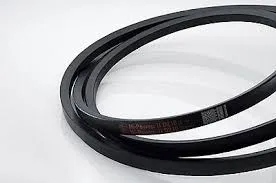- Arabic
- French
- Russian
- Spanish
- Portuguese
- Turkish
- Armenian
- English
- Albanian
- Amharic
- Azerbaijani
- Basque
- Belarusian
- Bengali
- Bosnian
- Bulgarian
- Catalan
- Cebuano
- Corsican
- Croatian
- Czech
- Danish
- Dutch
- Afrikaans
- Esperanto
- Estonian
- Finnish
- Frisian
- Galician
- Georgian
- German
- Greek
- Gujarati
- Haitian Creole
- hausa
- hawaiian
- Hebrew
- Hindi
- Miao
- Hungarian
- Icelandic
- igbo
- Indonesian
- irish
- Italian
- Japanese
- Javanese
- Kannada
- kazakh
- Khmer
- Rwandese
- Korean
- Kurdish
- Kyrgyz
- Lao
- Latin
- Latvian
- Lithuanian
- Luxembourgish
- Macedonian
- Malgashi
- Malay
- Malayalam
- Maltese
- Maori
- Marathi
- Mongolian
- Myanmar
- Nepali
- Norwegian
- Norwegian
- Occitan
- Pashto
- Persian
- Polish
- Punjabi
- Romanian
- Samoan
- Scottish Gaelic
- Serbian
- Sesotho
- Shona
- Sindhi
- Sinhala
- Slovak
- Slovenian
- Somali
- Sundanese
- Swahili
- Swedish
- Tagalog
- Tajik
- Tamil
- Tatar
- Telugu
- Thai
- Turkmen
- Ukrainian
- Urdu
- Uighur
- Uzbek
- Vietnamese
- Welsh
- Bantu
- Yiddish
- Yoruba
- Zulu
Окт . 09, 2024 10:00 Back to list
hnbr rubber timing belt
The Benefits of HNBR Rubber Timing Belts
When it comes to automotive engineering and maintenance, timing belts play a crucial role in ensuring the proper functioning of engines. Among the various materials used for manufacturing timing belts, hydrogenated nitrile butadiene rubber (HNBR) stands out for its exceptional properties. Known for its versatility and durability, HNBR rubber timing belts are becoming a popular choice in the automotive industry and beyond. This article explores the advantages of HNBR rubber timing belts and their applications.
What is HNBR?
Hydrogenated nitrile butadiene rubber (HNBR) is a synthetic rubber that is produced through the hydrogenation of nitrile rubber. This process improves its thermal stability, chemical resistance, and weathering properties. HNBR is known for its high resilience and tensile strength, making it an ideal material for demanding applications, especially in the automotive sector.
Benefits of HNBR Rubber Timing Belts
1. Enhanced Durability One of the most significant advantages of HNBR rubber timing belts is their durability. The hydrogenation process provides resistance against degradation from ozone, ultraviolet (UV) light, and high temperatures. This makes HNBR timing belts less likely to crack or become brittle over time, ensuring longer service intervals and reducing the need for frequent replacements.
2. Chemical Resistance HNBR exhibits excellent resistance to a wide array of chemicals, including oils, fuels, and solvents. This property is particularly important in automotive applications, where timing belts are often exposed to oil and other substances that could compromise their integrity. By using HNBR rubber, manufacturers can produce timing belts that maintain their functionality in harsh environments.
3. Low Friction Properties HNBR timing belts offer low friction characteristics, which can contribute to better energy efficiency in engine performance. Lower friction also means less wear on the belt and associated components, ultimately leading to a longer lifespan for both the timing belt and the engine.
hnbr rubber timing belt

4. Temperature Resistance High-performance engines generate significant heat, and timing belts must be able to withstand these elevated temperatures without losing their mechanical properties. HNBR rubber can perform effectively in a wide temperature range, typically from -40°C to +150°C. This adaptability ensures that the timing belt maintains its strength and elasticity under varying operating conditions.
5. Noise Reduction The design and material properties of HNBR timing belts can also contribute to lower operational noise levels. Many modern vehicles aim for a quieter cabin environment, and employing HNBR timing belts can help achieve this objective by minimizing the noise produced during engine operation.
Applications of HNBR Rubber Timing Belts
HNBR rubber timing belts are widely used not just in automotive engines but also in various industrial applications. Their resistance to chemicals and extreme conditions makes them suitable for machinery in the manufacturing and chemical processing industries. Additionally, they find utility in agricultural equipment where reliable performance is critical under robust operating conditions.
Many automotive manufacturers have begun to recognize the benefits of HNBR and are incorporating this material into their design specifications. The trend is expected to grow as awareness of the advantages of HNBR rubber timing belts continues to increase among engineers and product designers.
Conclusion
HNBR rubber timing belts represent a significant advancement in timing belt technology. Their superior durability, chemical resistance, low friction properties, temperature resilience, and noise reduction capabilities make them an excellent choice for both automotive and industrial applications. As the demand for more efficient and long-lasting components continues to rise, HNBR rubber timing belts are likely to play a pivotal role in the future of engine design and machinery operation. Adopting this advanced material can lead to improved performance, reduced maintenance costs, and enhanced reliability—all critical factors in today's fast-paced and quality-focused markets.
-
Korean Auto Parts Timing Belt 24312-37500 For Hyundai/Kia
NewsMar.07,2025
-
7PK2300 90916-T2024 RIBBED BELT POLY V BELT PK BELT
NewsMar.07,2025
-
Chinese Auto Belt Factory 310-2M-22 For BMW/Mercedes-Benz
NewsMar.07,2025
-
Chinese Auto Belt Factory 310-2M-22 For BMW/Mercedes-Benz
NewsMar.07,2025
-
90916-02660 PK Belt 6PK1680 For Toyota
NewsMar.07,2025
-
drive belt serpentine belt
NewsMar.07,2025

